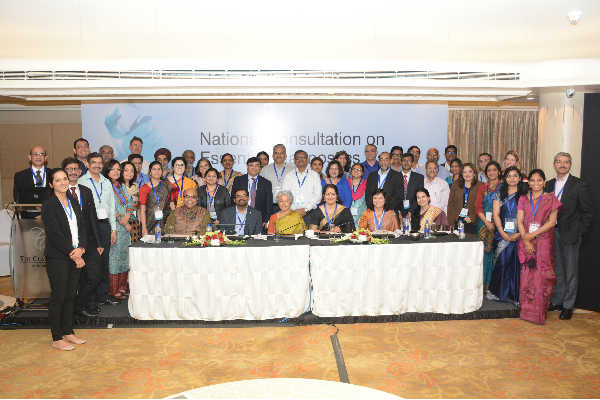ICMR along with several partners, including WHO India and McGill University recently convened the first national consultation on Essential Diagnostics List
The Indian Council of Medical Research (ICMR), Delhi, along with several partners, including WHO India and McGill University recently convened the first national consultation on Essential Diagnostics List (EDL).
To improve access to drugs, since 1977, WHO has published a Model List of Essential Medicines. India has published a National EML since 1996, with the most recent iteration released in 2015. The National EML in India has been helpful in capping prices of a variety of products, and has increased access to important medicines. The same model could be used for diagnostics. Without diagnostics, good medicines can be wasted, misused or simply not used.
Four decades after the first EML, WHO has begun work on the first Essential Diagnostics List. While WHO is developing an EDL, there is a window of opportunity for India to take the initiative, develop a National EDL, and set an example to other countries.
The National Consultation on EDL convened nearly 50 experts and stakeholders. Speakers included Dr Soumya Swaminathan, Deputy DG, WHO; Dr BD Athani, DGHS, Ministry of Health & Family Welfare; Dr RK Vats, Additional Secretary, MOHFW; Dr Vinod Paul, NITI Aayog; Dr Madhur Gupta, WHO, India; Dr Manisha Sridhar, WHO SEARO; Dr Catharina Boehme, CEO, Foundation for Innovative Diagnostics; Dr Anurag Bhargava, Yenepoya Medical College; Dr Lee Schroeder, University of Michigan; Mr Rajiv Nath, AIMED; Dr Shaukat, MOHFW, Dr Sandhya Kabra, NCDC; and Dr Madhukar Pai, McGill University. In addition, the consultation included product innovators, funders, industry colleagues, clinicians, laboratorians, and representatives of NGOs.
Speaking at the consultation, Dr Vinod Paul, NITI Aayog, encouraged the participants to think of EDL within the context of India’s push to offer comprehensive primary care. He also asked the group to be aspirational while creating a list for the country. Dr Soumya Swaminathan, DDG, WHO, said India’s EDL work fits well with WHO’s programme of work, and assured the participants that WHO will offer ICMR and the Indian Ministry all the support required to succeed with this initiative.
Participants at the consultation pointed out several potential benefits to an EDL: improving patient care, helping detect outbreaks, increasing affordability of tests, reducing out-of-pocket expenses for tests, reducing antibiotic abuse as part of AMR response, improving regulation and quality of diagnostic tests, strengthening accreditation and quality of laboratories, improving supply chain, and inspiring the R&D of new diagnostic tools.
Participants also pointed out the challenges that need to be addressed: how to define which diagnostics are essential? Which agency should develop the EDL? Which agency will keep it updated and how? How will the EDL be operationalised? How will states adapt and use the National EDL? How will EML and EDL work be harmonised? How can the EDL exercise be leveraged to improve regulation and quality of IVDs? How can the EDL be used for price control? Should medical devices also be covered by EDL?
Participants proposed several approaches to EDL development, including identification of tests
- that are necessary to maximise the impact of the National EML
- that are necessary to address the disease burden (most common conditions)
- that meet the most important diagnostic needs of care providers and patients at each level of the health system
- that can fill the current gaps in access to diagnostics
- for conditions for which adequate treatments and guidelines exist.
Meeting participants pointed out that the EDL process in India will need to improve upon the Free Diagnostics Service Initiative by the NHM, and the Indian Public Health Standards which lays down criteria for services at various levels of the health system, and the National Health Policy which refers to essential diagnostics. The proposed list would also need to factor in the issues of accuracy, affordability, cost-effectiveness, human resources, regulatory challenges and harmonisation with the available national guidelines.
Industry participants at the meeting welcomed the move to develop an EDL and agreed that an EDL could increase use of diagnostics in India, and could spur R&D, especially if the EDL could help define high priority target product profiles. “At AIMED, we are delighted that ICMR, MOHFW and WHO have initiated this national consultation for an EDL, along the lines of the National List of Essential Medicines. This has been our longstanding recommendation. We suggest that the EDL should not be limited to IVDs, but also include diagnostic devices,” said Rajiv Nath, Forum Coordinator, Association of Indian Medical Device Industry.
As next steps, a smaller working group will be created by the government, to move forward with the EDL process, which is expected to be completed by the end of the year.
- Advertisement -



Comments are closed.